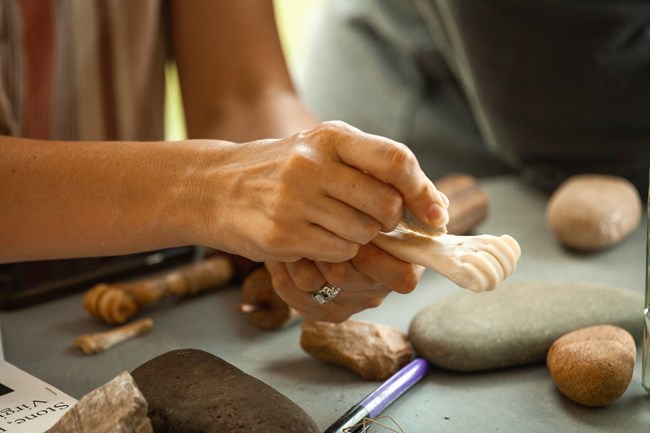
NPS Today, the Captain John Smith Chesapeake National Historic Trail offers the Maritime Crafts Field School as a professional development opportunity for tribes and other partners interested in interpreting indigenous heritage and the traditional maritime technologies of the Chesapeake Bay. Participants learn hands-on skills to incorporate into programming at their respective sites. Contact us for more information about field schools, or watch the videos below in which Michael Steen, Education Director for the Watermen's Museum, discusses traditional maritime technologies in detail.
Visit our keyboard shortcuts docs for details
In this video, learn how fire is used to efficiently produce large, sturdy canoes from a single log. Dugout canoes were essential for travel, trade, and fishing in the Chesapeake. This video is part of the Maritime Crafts Field School. The school was founded in 2019 in order to provide instruction in the traditional maritime technologies central to American Indian heritage in the Chesapeake Bay.
Visit our keyboard shortcuts docs for details
In this video, learn to make cordage, better known as string or rope, from natural materials like bark and grasses. Then, learn a technique for tying your cordage into a fishing net. This video is part of the Maritime Crafts Field School. The school was founded in 2019 in order to provide instruction in the traditional maritime technologies central to American Indian heritage in the Chesapeake Bay.
Visit our keyboard shortcuts docs for details
How did the Chesapeake Bay's indigenous peoples gather the large amounts of fish and shellfish needed to feed their communities? In this video, learn about the different tools and technologies that were traditionally employed by American Indian fisherman in the Chesapeake Bay. This video is part of the Maritime Crafts Field School. The school was founded in 2019 in order to provide instruction in the traditional maritime technologies central to American Indian heritage in the Chesapeake Bay.
Visit our keyboard shortcuts docs for details
Stone was an invaluable material for crafting the tools necessary for everyday life. This video explains the types of stone available in the Chesapeake Bay region along with the various techniques for shaping stone into useful tools. This video is part of the Maritime Crafts Field School. The school was founded in 2019 in order to provide instruction in the traditional maritime technologies central to American Indian heritage in the Chesapeake Bay. |
Last updated: September 29, 2021
